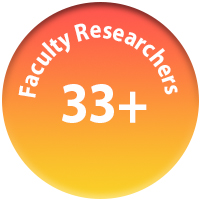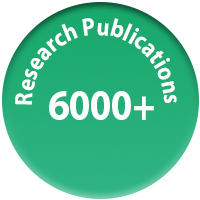Research
The Department of Chemistry is a large, vibrant, research-intensive environment that addresses key questions and posits solutions to real-world problems and applications. Our Department contributes to Faculty of Science and University-wide research endeavours through interdisciplinary collaboration and creative partnerships.
Taking a modern view of the chemical sciences, the four main research themes reflectWestern’s open-minded and multidisciplinary approach to research. These themes include Chemical Biology and Biomaterials; Synthesis, Catalysis and Molecular Materials; Materials: Design, Function and Characterization; and Theory and Computation.
We are proud to boast over 25 NSERC-funded researchers, some of whom are Canada Research Chairs . We developed and cultivated numerous links between academic and industrial partners, and with some of the finest research facilities in Canada.
Our researchers play leading roles in organizations within Western, including Surface Science Western, and the Western Nanofabrication Facility, and publish regularly in top tier peer-reviewed journals.
Research Themes
Chemical Biology and Biomaterials
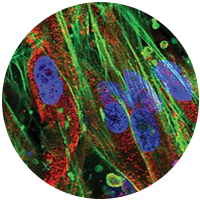
Chemical Biology is at the interface between chemistry, biology, and biochemistry and can be defined as the use of chemistry to advance a molecular understanding of biology and/or the harnessing of biology to advance chemistry.
The development of a molecular understanding of biochemical systems requires molecular tool kits and associated instrumental developments that enable the analysis of complex processes. These challenges bring together researchers from biochemistry, materials science and engineering, and chemistry with a focus on the elucidation of biochemical processes in a quantitative manner. Tailor-made molecules and materials make it possible to study interactions in biological processes, such as cell signalling or protein folding, and provide novel probes for molecular imaging in living cells. Microarray technologies, which enable the analysis of thousands of surface-bound molecules simultaneously, together with new single molecule techniques, have given rise to some key advances that ultimately may have applications in medical diagnostics, drug discovery, and treatment of diseases.
Synthesis, Catalysis, and Molecular Materials
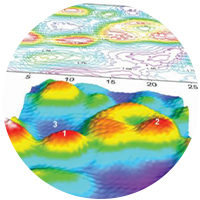
The theme Synthesis, Catalysis, and Molecular Materials is identified as a signature area at Western and includes the research programs of nine faculty members in Chemistry encompassing the main group and d-block elements. These research programs include expertise on the synthesis of natural products and developing new synthetic methods in organic chemistry; the incorporation of heavier main group elements into electronic and polymeric materials; organometallic and supramolecular polymers; functional nanostructured semiconductor materials; molecular machines and anion recognition materials; and finely tuned homogeneous metal catalysts. Students receive advanced instrument training in all of these programs including NMR spectroscopy, mass spectrometry, powder and single-crystal X-ray diffraction, and absorption and emission spectroscopies.
Design, Function and Characterization / Energy and Mechanism
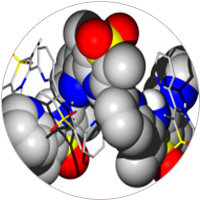
Identified as a signature area at Western, Materials: Design, Function and Characterization research involves the synthesis and the characterization of materials for energy conversion, storage and catalysis, the fabrication of optical sensors for high sensitivity optical detection, the development of advanced spectroscopic techniques (Synchrotron radiation, spectroscopy under extreme conditions, scanning probe microscopies) with the goal to design, optimize and fabricate functional devices.
The Energy and Mechanism theme affiliates researchers whose interests include chemical kinetics and transport phenomena in chemical, electrochemical, metallurgical, and radiation-induced reactions; environmental studies relevant to industrial processes and nuclear power generation; computer simulations in condensed phase, computational chemistry, and electronic structure theory.
Theory and Computation
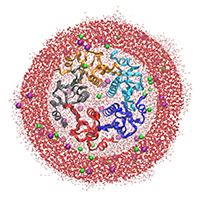
The three computational chemistry groups at Western cover an exceptionally broad range of topics both in method development and applications. The development side encompasses theoretical models and computer codes of quantum chemistry, free-energy techniques, atomistic, multi-scale, continuum and hydrodynamic methods, as well as phase-field modeling of soft and condensed matter. On the application side, problems tackled by computational chemists at Western include spectroscopy, chemical reactivity, atmospheric and electrosprayed aerosols, cluster/droplet chemistry, proteins, lipid bilayers, biopolymers, reaction-diffusion systems, and active matter. All of the groups have tight connections with experimental researchers at Western, elsewhere in Canada, and internationally. Former students and postdocs include several professors, CIHR, NSERC Banting and EU Marie Curie scholars.
Research Articles
Keeping nuclear waste out of the watershed
Nuclear Waste StoryChanging the uses for natural resources
Changing natural resourcesThe organic solution to efficient fertilizer uptake
Fertilizer Uptake Research StoryResearch Podcasts & Profiles
Metal Organic Frameworks: Deceptively small molecules conceal enormous potential
YH MOFsRolling the dye: synthetic technology in electricity
synthetic technology in electricityHouse of balloons: chemistry's innovative forefront
Select Science facilities and research hubsResearch Stats


